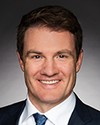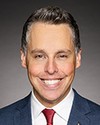I appreciate the time, Ms. O'Connell.
I, too, would like to say that I miss being on the finance committee with you all, but I don't. That is the truth, and I'm under oath so I have to make sure that I tell you the truth here.
Indigenous representation, indigenous equity participation, in major infrastructure projects in this country is essential. It's crucial and it's something that indigenous partners are asking for and needing.
What I would urge is that the government of the day move faster in this case, because they're ready, willing and able, meaning the first nations are ready, willing and able to take part. They just need to have the right vehicle. Maybe it's going to be through the Canada Infrastructure Bank for certain projects, but it's not going to be the CIB for fossil fuel projects. Fossil fuel projects are just as important as green projects in terms of having equity participation from first nations where they wish to be participants, such as in Coastal GasLink, such as in buying tank farms, such as in buying other pipelines, as well. These are important assets for first nations to be a part of.
I would say as well, one interesting piece, Ms. O'Connell, is that it's not necessarily a step to have the government involved in some of these projects. Fort McKay is a great example of wonderful leadership that was able to do their own investing through a bond from one of the big six banks here in Canada. They raised their funds in order to be part and parcel of a deal with Suncor on tank farms. I think that's going to happen more and more in this country.
For some larger projects, there will need to be government assistance. I encourage the government to figure out the vehicle for indigenous equity participation as quickly as possible, if I could.
Maybe the panellist who's sitting here with me, as well, today knows that I'm speaking directly though the chair to him at this moment, but it would be delightful if we were able to have some clarity and a path for equity participation for indigenous groups in the country that included facilitation by the government.
Thank you for the time.




